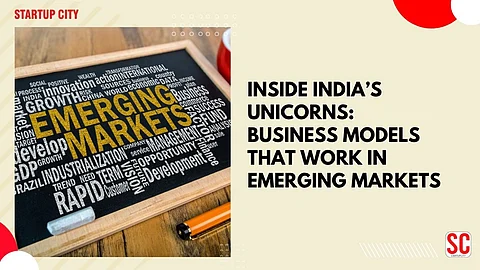

What if I told you that India’s most successful unicorns didn’t just disrupt—they decoded the DNA of emerging markets?
In my experience working with startups and founders across India, one thing has become crystal clear: India isn’t just producing unicorns—it’s redefining how to build them. Whether you're a first-time founder, a seasoned CEO, or an investor eyeing your next big bet, understanding the business models behind these billion-dollar companies is no longer optional—it's essential.
Let me take you behind the scenes of India's unicorn success story.
India has over 100 unicorns, and many more are inching towards that status. According to a Nasscom-Zinnov report, India is the world’s third-largest startup ecosystem, with startups collectively raising $42 billion in 2021 alone. But funding isn’t the full story.
What truly sets India’s unicorns apart? They’ve mastered the art of adapting to constraints, scaling with scarcity, and building for Bharat—not just India.
That’s a skill every startup in an emerging market needs.
Let’s face it: doing business in India isn’t Silicon Valley with a Bollywood filter. We deal with:
Fragmented infrastructure
Price-sensitive customers
Digital literacy gaps
Logistical nightmares
And yet… founders are building beasts of businesses. Here's the secret—they’ve cracked business models with four critical traits:
Startups like OYO and BYJU’S offer high-value services at affordable prices by leveraging tech and partnerships. OYO aggregated unbranded hotels and gave them standardized branding—creating scale without ownership.
From ShareChat building regional content platforms to Meesho empowering Tier-II sellers, unicorns are local-first, not English-first.
Think Razorpay—they didn’t build another crypto wallet. They fixed payment pain points for India’s SMEs.
India’s unicorns win because they build ecosystems. Zomato isn’t just a food delivery app. It’s a restaurant discovery engine, logistics provider, and now even a B2B supplier.
Let’s unpack some of the most powerful, scalable, and sustainable models driving India’s unicorns.
Model: Freemium + Subscription
What Works: Personalized content, aggressive marketing, mobile-first learning
Emerging Market Fit: Offline + online hybrid models; multi-language support
Quote to Remember:
“India doesn’t need more content. It needs better access to content.” – Byju Raveendran
Model: Platform-based Aggregation
What Works: Owning customer experience, not the asset
Emerging Market Fit: Easy onboarding for fragmented supply chains
Model: Commission-based B2C2C
What Works: Empowering small resellers via WhatsApp, vernacular support
Emerging Market Fit: Hyperlocal + hyper-affordable
Model: SaaS + Transaction Fee
What Works: Building trust in digital payments, making finance intuitive
Emerging Market Fit: Solves for the 500M unbanked and underbanked
Imagine this: a model that works in a high-friction, low-trust, price-sensitive market like India… will work anywhere.
Here’s why India is the ultimate stress test for business models:
High volume, low margin dynamics teach operational discipline
Frugality leads to innovation, not just cost-cutting
Behavior-first design beats tech-first design
If you build for India, you’re not just building for survival—you’re building for scale.
Thinking of building your own unicorn? Here’s what I’d tell any founder:
Solve India-first problems. Start with local pain points, not global trends.
Design for constraints. Resource limitations fuel smarter solutions.
Build trust before you build scale. Trust is the currency of emerging markets.
Marry tech with human touch. Even the best app can’t replace empathy.
Think ecosystem, not product. What more can you enable once you win the user?
Udaan didn’t chase vanity metrics. It built a B2B commerce platform that digitized India’s wholesale trade—something that was chaotic and largely offline. The result?
$3.1 billion valuation
3 million+ retailers onboarded
Deep penetration into Tier-II and Tier-III cities
They didn’t just disrupt—they organized an entire economy.
Are you building for noise or solving for need?
Can your business model thrive with thin margins and thick competition?
If your startup were forced to go offline, would it still work?
If you’re unsure of your answers, maybe it’s time to rethink your model.
You’re not alone if you’ve wondered, “Can I build something big in a market so complex?” I’ve seen it again and again—the biggest opportunities lie in the messiest problems.
The Indian unicorns didn’t get lucky. They got strategic. They built with empathy, discipline, and relentless innovation.
And so can you.
If this article sparked a new idea or helped validate your strategy, I’d love to hear from you. Let’s turn insights into impact.